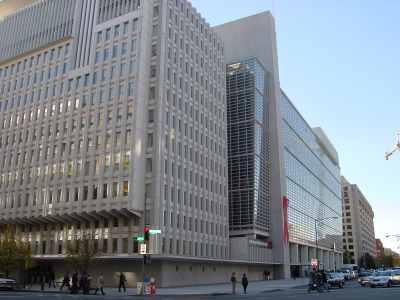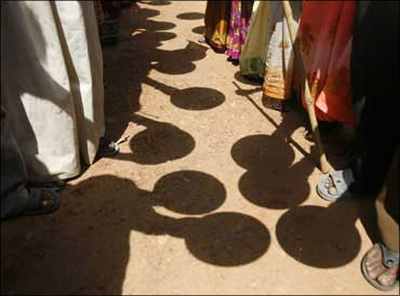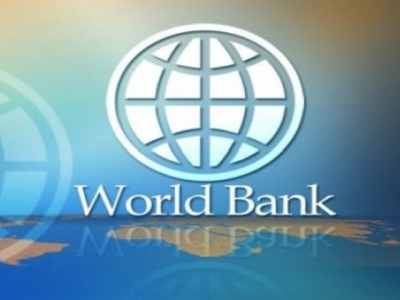 | « Back to article | Print this article |
World Bank extends $4.3 billion aid to India
On Wednesday, the World Bank announced a new innovative and flexible financing arrangement for India -- one of its largest client countries -- allowing it to obtain substantial and additional financing from the International Bank for Reconstruction and Development, the Bank's middle-income lending arm to alleviate the abject poverty in that country.
This arrangement, while facilitating a $4.3 billion increase in support to India, is designed to maintain IBRD's net exposure within the limit of US$ 17.5 billion established by the IBRD for lending to a large, highly creditworthy borrower like India.
The new arrangement will allow for special bonds to be issued by the World Bank and purchased by India, to offset additional planned lending.
Union Budget 2012-13: Complete coverage
Click NEXT to read more...
World Bank extends $4.3 billion aid to India
This will enable India to continue accessing long-term, low-interest IBRD finance for development projects aimed at improving the lives of its people, one third of whom are yet to make their way out of poverty, the Bank said.
Isabel Guerrero, the Bank's vice president for South Asia, said that if this action had not been taken, "It would have been difficult for the Bank to assist India meaningfully as it tackles the remaining large challenges of lifting some 300 million out of poverty."
She said, "This new arrangement will work toward supporting India's developing needs, showing the Bank can be innovative, flexible and responsive to the differentiated needs of our client countries."
Union Budget 2012-13: Complete coverageClick NEXT to read more...
World Bank extends $4.3 billion aid to India
The Bank pointed out that like other emerging economies, India is faced with the challenge of removing bottlenecks in infrastructure and human skill development that can constrain its ability to sustain non-inflationary, rapid and inclusive growth.
It said, this has led to growing demands for the Bank's low-cost financing and the institution has been exploring innovations to meet these calls for its services.
The new move, the Bank said, is in line with previous commitments by the World Bank that the Bank strives to leverage its financial and knowledge resources to help India as it steps up its response to its development challenges.
Union Budget 2012-13: Complete coverageClick NEXT to read more...
World Bank extends $4.3 billion aid to India
In line with its aim to support the Government of India's development goals, the World Bank has nearly 80 active projects in India, with several large projects in the critical area of infrastructure.
Funding for active World Bank Group projects includes $ 9.2 billion in interest-free credits from the Bank's fund for the poorest, the International Development Association (IDA); $ 14.6 billion from IBRD; and a committed portfolio of $ 3.57 billion from the Bank's private sector arm, the International Finance Corporation.
The World Bank Group in its last fiscal year, ending June 2011 has made $6.32 billion available to India, including $2.07 billion from IDA, $3.47 billion from IBRD and $775 million from IFC.
Union Budget 2012-13: Complete coverageClick NEXT to read more...
World Bank extends $4.3 billion aid to India
The new financing arrangement was approved by the World Bank's Board of Executive Directors on March 13.
Angela Walker, spokesperson for the World Bank South Asia region, told rediff.com that the idea behind issuing Special Private Placement Bonds for India was to enable it to expand its accorded to World Bank financing.
"The IBRD provides countries with long-term, low-interest financing on terms that are more favorable than the market," she said.
Asked how India would benefit, Walker explained that "India is one of its Bank's largest client countries. At present, India's exposure limit with the World Bank stands at $17.5 billion. After India purchases these bonds, this limit will stand raised by $4.3 billion over the next three years."
Union Budget 2012-13: Complete coverageClick NEXT to read more...
World Bank extends $4.3 billion aid to India
"This greater access to finance on favourable terms will enable the country to boost its investments in critical infrastructure and human resources, which are essential for the country's development," she added.
Walker said this plan of action had come about following "Larger discussions between the Government of India and the World Bank about how the Bank could support India's growing needs.
As the World Bank's resources are finite and India's need for development resources is huge, the Bank explored a number of options to meet the country's request for greater access to development resources. The bonds are one of the measures being adopted."
Union Budget 2012-13: Complete coverageClick NEXT to read more...
World Bank extends $4.3 billion aid to India
She said if this special bond issue had not taken place, "World Bank lending to India would have declined from around $4 billion a year to less than $1 billion a year, constraining the country's ability to undertake critical development initiatives."
Walker in elucidating how this bond mechanism works said, "Bonds like these make it possible to put global savings to good use. On the one hand, there is plenty of liquidity in the world; developing countries hold large reserves as do many developed countries."
"On the other hand," she pointed out, "Huge investments are needed to develop both physical and social infrastructure in the emerging and developing economies. Such bonds help channel global resources into activities that have the most beneficial impact on the world's people, especially the poor."
Union Budget 2012-13: Complete coverage





